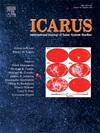射电掩星剖面中等离子体不对称校正的新技术
IF 2.5
2区 物理与天体物理
Q2 ASTRONOMY & ASTROPHYSICS
引用次数: 0
摘要
射电掩星(RO)实验通常采用几何光学(GO)近似和阿贝尔变换,假设行星大气或电离层的球对称来获取电子密度分布。这一假设也被推广到推导低层大气的温度、压力和中性密度分布。然而,球对称的假设并不总是有效的,并且可以在检索到的电子密度分布中引入显著的不确定性。本文提出了一种考虑电离层不对称性的简单检索算法,并论证了太阳天顶角(SZA)沿射线路径变化的影响。与传统方法不同,该方法不依赖于Abel变换,避免了球对称假设,适用于多种地球物理条件。该方法应用于RO对金星周围的观测,这些观测来自赤月和金星快车(VEX)无线电科学实验。假设等离子体主要由太阳辐射产生,其分布为:N(sza)=N0×cos(sza)cos(sza0)k,其中N0为sza0时的等离子体密度,k = 0.454。结果表明,采用球对称假设,主峰电子密度高估了2% ~ 5%,低海拔电子密度高估了400% ~ 800%。提出的方法提供了一个更精确的框架来检索电子密度分布,特别是在球对称假设被打破的区域。本文章由计算机程序翻译,如有差异,请以英文原文为准。
A novel technique for plasma asymmetry correction in radio occultation profiling
Radio Occultation (RO) experiments often employ the geometrical optics (GO) approximation and the Abel transformation, assuming spherical symmetry of the planetary atmosphere or ionosphere to retrieve electron density profiles. This assumption is also extended to derive temperature, pressure, and neutral density profiles of the lower atmosphere. However, the assumption of spherical symmetry is not always valid and can introduce significant uncertainties in the retrieved electron density profiles. This study proposes a simple retrieval algorithm that accounts for ionospheric asymmetry and demonstrates the effect of solar zenith angle (SZA) variation along the ray path. Unlike traditional methods, it does not rely on the Abel transformation and avoids the assumption of spherical symmetry, making it applicable under diverse geophysical conditions. The method is applied to RO observations around Venus, obtained from the Akatsuki and Venus Express (VEX) radio science experiments. It assumes that plasma is primarily produced by solar radiation and follows the distribution: , where is plasma density at , and k = 0.454. Results indicate that using the spherical symmetry assumption overestimates the main peak electron density by 2%–5% and the electron density at lower altitudes by 400%–800%. The proposed method offers a more accurate framework for retrieving electron density profiles, particularly in regions where the spherical symmetry assumption breaks down.
求助全文
通过发布文献求助,成功后即可免费获取论文全文。
去求助
来源期刊

Icarus
地学天文-天文与天体物理
CiteScore
6.30
自引率
18.80%
发文量
356
审稿时长
2-4 weeks
期刊介绍:
Icarus is devoted to the publication of original contributions in the field of Solar System studies. Manuscripts reporting the results of new research - observational, experimental, or theoretical - concerning the astronomy, geology, meteorology, physics, chemistry, biology, and other scientific aspects of our Solar System or extrasolar systems are welcome. The journal generally does not publish papers devoted exclusively to the Sun, the Earth, celestial mechanics, meteoritics, or astrophysics. Icarus does not publish papers that provide "improved" versions of Bode''s law, or other numerical relations, without a sound physical basis. Icarus does not publish meeting announcements or general notices. Reviews, historical papers, and manuscripts describing spacecraft instrumentation may be considered, but only with prior approval of the editor. An entire issue of the journal is occasionally devoted to a single subject, usually arising from a conference on the same topic. The language of publication is English. American or British usage is accepted, but not a mixture of these.
 求助内容:
求助内容: 应助结果提醒方式:
应助结果提醒方式:


